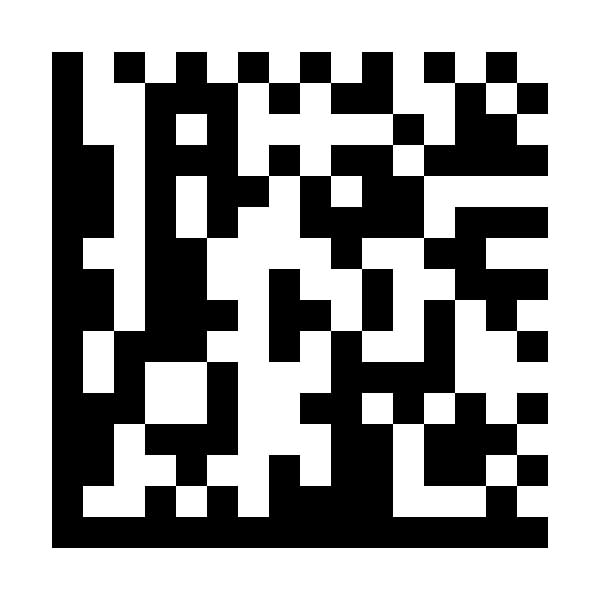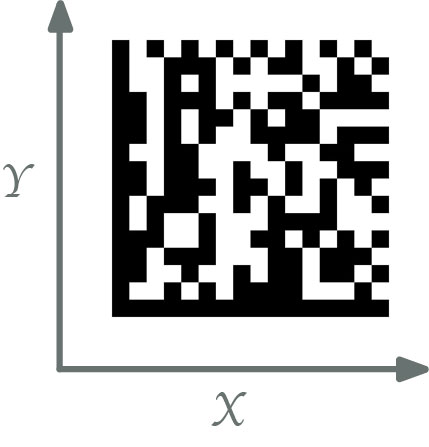Data Matrix Barcodes
Data Matrix Barcodes
The Data Matrix barcode format is 2D — meaning it encodes information both horizontally and vertically. It was created in 2005 by International Data Matrix, Inc. was eventually acquired by Microscan Systems. While the company attempted to keep the patent for this barcode proprietary, it was deemed public domain and is now included under several ISO/IEC standards, including:
- ISO/IEC 16022:2006— Symbology Specification
- ISO/IEC 15415— Print Standards for 2D Barcodes
- ISO/IEC 15418:2009— Format Semantics for Symbol Data
- ISO/IEC 15424:2008— Identification for Data Carriers
- ISO/IEC 15434:2006— Formatting for Transferred Data
- ISO/IEC 15459— Unique Identifier Characteristics
What sets the Data Matrix barcode apart from other 2D codes is size and design. These barcodes are of the smallest 2D types used and are capable of encoding up to 50 readable symbols in a 3mm² area. They also feature two solid borders on one corner of the barcode combined with white and dark cells across its width and length and which make up its other two borders. As more information is added to Data Matrix codes, they expand both vertically and horizontally. The barcode is capable of encoding over 3000 characters in ASCII, C40, TEXT and BASE256. It also leverages the ECC 200 error correction standard that allows codes with up to 40% damage to be accurately read.

Format
Every Data Matrix barcode contains two adjacent, solid borders. The white and black cells within the barcode represent bits — either light for “1” and dark for “0”, or vice versa — which contain encoding information. The two solid bars of the Data Matrix format are called the “finder pattern” while the opposite borders are the “timing pattern.” As more data is added, the number of rows and columns can be expanded. The ECC 200 standard supports barcodes between 10×10 to 144×144 symbols, while the older ECC 000-140 versions support 9×9 to 49×49 symbols.

Common Use Cases
Data Matrix barcodes are commonly used in both industrial engineering and food packaging to ensure components or products are uniquely marked. The compact size of Data Matrix barcodes makes them ideally suited to small form-factor packaging or industrial devices.